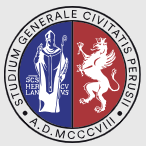Introduction
The University of Perugia is a public institution of higher learning with a long history in Italy. It is located in Perugia, the capital of the Umbria region in central Italy. It has a rich range of disciplines, covering many fields from humanities and social sciences to natural sciences. It attaches equal importance to teaching and scientific research, and has a certain reputation in Italy and even internationally.
Overview
Student size: There are 26,732 students in the 2017-2018 academic year, including 12,868 undergraduates, 8,670 postgraduates, and 470 doctoral students.
Number of faculty and staff: There are 1,088 academic staff and 1,200 administrative staff in 2017.
History
The school can be traced back to around 1200, when a group of students separated from the University of Bologna and formed a school here.
On September 8, 1308, Pope Clement V issued a bull recognizing it as a "studium generale”, making it an institution of higher learning that accepted scholars from all over Europe and awarded recognized degrees.
From 1316 to 1324, the civil jurist Iacopo da Belviso taught here.
On August 1, 1318, Pope John XXII granted the university the right to award degrees in civil and canon law, and on February 18, 1328, it also granted it the right to award degrees in medicine and arts.
On May 19, 1355, Emperor Charles IV issued a bull that strengthened the pope's bull and raised the university to royal level.
In 1362, Cardinal Niccolò Capozzi founded the collegium gregorianum (later renamed "sapienza vecchia") to teach theology.
In 1426, with the approval of Martin V, the Collegium of San Girolamo was established.
In 1798, the location of the university was changed to Piazza Sopra Muro.
In 1811 In 1860, the theology department was abolished and its property was incorporated into the university.
On August 27, 1824, Leo XII designated the sapienza nuova as the main college of the university.
After the unification of Italy in 1860, the University of Perugia was placed under the jurisdiction of the president and the city council.
In the 1930s, political science, veterinary medicine, chemistry and agricultural colleges were added.
Foundation time
Formally established in 1308.
School strength
Faculty: With more than 1,000 academic staff, it provides students with professional and rich teaching and guidance.
Scientific research level: The school's scientific research results are recognized in many fields. For example, the research in disciplines such as agricultural science and clinical medicine has a certain influence internationally. Its research projects are carried out by 1,200 full-time staff from 14 departments, and there are also 25 service organizations and research centers.
International cooperation: As a member of the Almalaurea and Compostela Group of Universities, the university has exchange student programs with 382 universities around the world and participates in 17 doctoral degree programs. Its cooperative institutions include the European Atomic Energy Center in Switzerland and the Tiangong Space Station in China, creating broad international exchange and learning opportunities for students.
Nature of the institution
Public university.
Educational philosophy
Focus on cultivating students' comprehensive literacy and practical ability, and is committed to combining theoretical knowledge with practical application so that students can better adapt to the needs of social development. At the same time, it emphasizes interdisciplinary learning and research, and encourages students to explore and innovate between different disciplines to cultivate professionals with global vision and innovative spirit.
Key laboratories and disciplines
Key laboratories: The school has multiple scientific research laboratories, such as physics laboratories, chemistry laboratories, and biological laboratories, which provide advanced equipment and technical support for the research of related disciplines.
Advantageous disciplines:
Agricultural science: It has profound academic accumulation and research strength in agricultural production, animal husbandry, food science, etc., and has cultivated a large number of professionals in the agricultural field.
Medicine: The School of Medicine and Surgery has a long history and high level of teaching and scientific research, covering multiple professional directions such as clinical medicine, pathology, internal medicine, and surgery.
Law: The School of Law is one of the traditional advantageous disciplines of the school, and has achieved remarkable research and teaching results in the fields of international law, constitutional law, and Roman law.
Engineering: The disciplines of the School of Engineering have developed rapidly, and many outstanding engineering and technical talents have been trained in professional fields such as civil engineering, electronic engineering, and mechanical engineering.
Faculty
The school has 16 departments, including the Department of Agriculture, Food and Environmental Sciences, the Department of Chemistry, Biology and Biotechnology, the Department of Civil and Environmental Engineering, the Department of Economics, the Department of Engineering, the Department of Humanities, Ancient and Modern Languages, Literature and Culture, the Department of Law, the Department of Mathematics and Computer Science, the Department of Medicine and Surgery, the Department of Pharmacy, the Department of Philosophy, Social Sciences and Education, the Department of Physics and Geology, the Department of Political Science, the Department of Veterinary Medicine, etc.
Ranking
2022-2023 US news world university rankings: 385th, of which agricultural sciences ranked 149th, biology and biochemistry ranked 465th, etc.
2024 QS world university rankings: 661-670th.
Expenses
Tuition fees: The registration fee for undergraduate and master's degrees is about 2096 euros/year.
Living expenses: The monthly living expenses of students are about 800-1200 euros, including accommodation, food, transportation, etc.
Campus Environment
Geographic location: The main campus is located in Perugia, the capital of the Umbria region in central Italy. From the perspective of art, culture and history, it is one of the important cities in Italy. The city center is located on the top of the mountain, with beautiful natural environment and convenient transportation, providing students with a good learning and living environment.
Teaching facilities: It has 13 libraries and the University Science Museum Center, which provide rich resources for students' learning and research. In addition, the school also has a language center, which provides students with a variety of language courses and the latest language learning facilities.
Campus culture: As a university with a long history, the University of Perugia has a rich campus culture and tradition. The school often holds various academic lectures, cultural activities and sports competitions, etc., encourages students to actively participate, and creates a strong academic atmosphere and active campus cultural life.
-
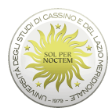
University of Cassino and Southern Lazio
-

University of Campania Luigi Vanvitelli
-
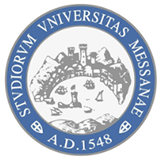
University of Messina
-
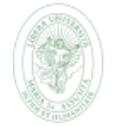
Libera Universita degli Studi Maria SS. Assunta di Roma (LUMSA)
-
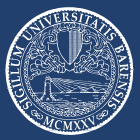
University of Bari Aldo Moro
-
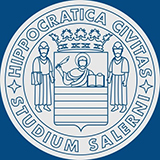
University of Salerno
-
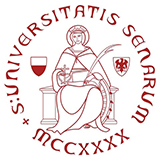
University of Siena
-
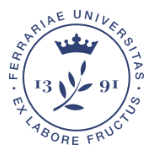
University of Ferrara
-
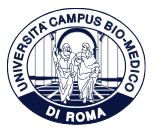
Campus Bio-Medico University of Rome
-

University of Genoa
-

Mesoamerican University
-

Istmo University
-

Mariano Galvez University of Guatemala
-

Regional University of Guatemala
-

Galileo University
-

Francisco Marroquín University
-

Rafael Landívar University
-

University of the Valley of Guatemala
-

University of San Carlos of Guatemala
-

Technological Institute of Tlaxcala Plateau
-

Golfo University
-

Technological University of South Sonora
-

Technological University of Huejotzingo
-

Tizimín Institute of Technology
-

Chilpancingo Institute of Technology

